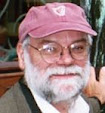Two days ago we had the 33rd anniversary of the Great Midwest Blizzard of January 26, 1978. The statistics on this blizzard are widely available on the internet. Check out, for example, the Wikipedia entry at this site: http://en.wikipedia.org/wiki/Great_Blizzard_of_1978
One notable statistic is the record low barometric pressure measured in Cleveland--28.28 inches, "the lowest non-tropical atmospheric pressure ever recorded in the United States." This low pressure caused the furious winds and driving snow of that day.
I was living in the Corryville/Clifton neighborhood of Cincinnati at the time. When I went to bed on the evening of January 25th, it was warm and it was raining and the wind was picking up. Some time in the middle of the night, maybe 2 or 3 AM, the sound of the driving rain against the windows changed to the beat of driven sleet--the temperature was plummeting. And a short time later, the sound of the sleet changed to a softer sweeping sound, the sound of snow.
By the end of the 26th of January, Cincinnati was buried in snow, and this in a city unused to a lot of snow and unable to handle it very well. Many places in the Midwest ended up with more snow than Cincinnati, from 3 to 5 feet! South Bend had 3 feet, Chicago about 5 feet, and many places in Michigan had 2-4 feet. Amazingly, snow accumulations were only part of the story. The biggest problem was the hurricane force winds and the giant drifts--combined with the bitter cold. I remember at the time a truck driver near Mansfield, Ohio was stranded--and then buried in snow. His truck was entirely hidden, under a 15-20 foot drift. This man was rescued by his brother almost a week after the blizzard ended.
Here is the story about the buried truck from OhioMagazine.com (March 2007):
"Weather or Not"
Richard Osborne
Our cover headline this month is easier said than done. Think spring? It's not the easiest frame of mind to adopt when the weather outside is spiteful, if not frightful.
But here in Ohio, half the fun of the changing of the seasons is complaining about it. And no matter how uncomfortable it seems at times - too cold or too hot - those of us of a certain age can always cite another time when it was worse.
As we deal with our annual wintry blasts, the blizzard of 1978 is one such blast from the past. That one did indeed qualify for the record books. Tears glistened behind his glasses as Gov. James A. Rhodes spoke of the thousands of Ohioans stuck at home - or, worse, stranded - frozen and in the dark, terrorized by the elements.
Rhodes called it a "killer blizzard." The Cincinnati Enquirer called it a "savage snowstorm." In Cleveland, The Plain Dealer called it the "snow of the century." And The Journal (now The Morning Journal) in Lorain, where I worked at the time, called it "the blizzard that stopped Ohio."
Many Ohioans didn't realize anything was wrong until their electric alarm clocks failed to awake them on the morning of Jan. 26, 1978.
Whipped by wind gusts exceeding 80 miles per hour, snow created drifts that made roads impassable. For the first time in its 20-year history, the Ohio Turnpike was closed from one end to the other.
Only the heartiest of souls - including 2,000 National Guardsmen called up by Rhodes - willingly ventured out. Others simply got caught. Among the latter unfortunates was Jim Truly, a 43-year-old Cleveland truck driver who for the remainder of his life - he died in 1986 - would recall the date as "the day I got buried."
Truly was buried for six days inside the cab of his 40-foot tractor-trailer rig, covered by drifting snow that shut St. Rte. 13 north of Mansfield. Trapped without food or heat for 124 hours, he ate snow, smoked cigarettes and prayed.
A year later, when I interviewed him for the Lorain newspaper, Truly spoke matter-of-factly about his ordeal. "I never gave up," he said.
Calls for help over his CB radio went unanswered. Still, his CB - or, more precisely, his CB antenna - would prove to be the catalyst of his rescue. His brother Don, who braved the elements in a desperate search to find him, spotted the antenna poking up about an inch out of the snow. Rescued, Jim Truly was able to walk out on his own.
Now there's a weather story to remember. Keep it in mind on one of our remaining cold winter's days. But most of all, think good thoughts. Think spring.
We are used to wild winter weather in Ohio--but January 26, 1978 was something else! Something wild and historic.
Friday, January 28, 2011
Subscribe to:
Post Comments (Atom)


No comments:
Post a Comment